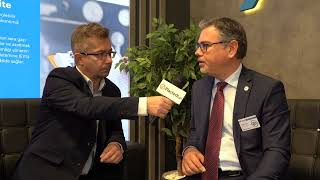 It is hard to imagine today how our food will be produced in just a few decades. More efficient, low carbon footprint, healthy, tasty and often grown around the corner. Let's take a look into the future.
It is hard to imagine today how our food will be produced in just a few decades. More efficient, low carbon footprint, healthy, tasty and often grown around the corner. Let's take a look into the future.The conference “Revolution in Food and Biomass Production (REFAB)”, 1 - 2 October 2018, Cologne (Germany) will for the first time bring together forward-thinking experts from companies, start-ups and research institutions to have a look at the future of food and biomass production. What high-tech strategies are emerging to supply food and biomass to the growing world population? REFAB offers a unique opportunity to meet pioneers and forerunners in food and biomass production, providing a mix of perspectives, technologies and branches to give a comprehensive and holistic picture, and increase synergetic effects.
For the first time in human history, we have a deeper understanding of soil, its functionalities and requirements and the role bacteria and fungi play in the nutrient uptake of plants and trees. We know how to achieve healthy and productive soils through biostimulants while nitrogen-fixing bacteria reduce the use of additional nitrogen. The Indian TERI institute will report on mycorrhizae and nano-biostimulants for precision agriculture.
Precision farming with artificial intelligence (AI), robots and drones can help to fertilise and protect plants more efficiently and with reduced environmental impacts. Speakers from Bayer (“Digital Agriculture”) and Evonik (“Precision Livestock Farming”) will present their latest developments. Improvements in plant varieties can enhance plant ingredients and make better use of solar radiation with enhanced photosynthesis systems (University Wageningen).
Mariculture or marine farming is about to become an important sector. This means the cultivation of marine organisms for feed, food and other products in the open ocean and enclosed sections of the ocean, in tanks, ponds or raceways filled with seawater. The Spanish company “Smart Floating Farms” will present modular floating platforms for local food production.
Forestry will supply a wide range of chemicals and bio-based products manufactured in biorefineries, including environmentally friendly textile fibres.
Insects, algae and bacteria can be used to develop new sources of protein. Bacteria can even digest CO2 to produce feed proteins for aquaculture. Companies from France (Ynsect) and South Africa (AgriProtein) will show how insects could become a sustainable protein source.
With indoor farming in our kitchens and vertical farming on an industrial scale, healthy food can be produced efficiently and locally. OSRAM (DE) will present their controlled environment agriculture (CEA) technology.
Organic farming and smallholder production methods will greatly benefit from many of these new developments by increasing efficiency while respecting their original ideals and principles. Tansa from India and Dr. Bronner’s Magic Soaps (US), active in several countries, will show how smallholders and organic farming can become ready for the future.
Food and biomass production will be possible even under the most extreme conditions: In dry areas, “greening the desert” turns to reality through solar technology, deep water or desalination plants as well as hydroponics. In the icy north, productivity can be increased through LED illuminated greenhouses, while other technologies will even allow the production of food in space stations, on the moon and on Mars. The European Space Agency will present “Man to Mars means Waste to Food” and Teshuva Agricultural Projects from Israel introduces their hydroponic agriculture under challenging conditions.
The conference is guided by a high-level advisory board with experts from six countries, that will address the newest developments within the scope of their work.
The two-day conference will feature about 50 presentations, more than 500 participants (mainly from industry) and 30 exhibitors are expected.
Source: nova-Institut GmbH


